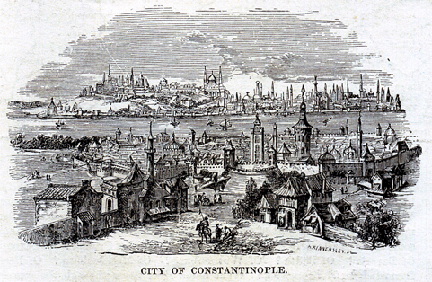
In a previous post I presented an account of the geography of Arabia and Turkey in an 1879 geography school text. Here is the discussion on the European part of the declining Ottoman Empire:
1. TURKEY, constituting the European dominion of the Ottoman Empire, comprises the middle portion of the great southeastern peninsula of Europe.
2. The Climate in some places is severe, but is healthful and favorable to the growth of all the common cereals.
3. The Soil is productive, yielding in abundance the useful grains, tobacco, and grapes, as well as the olive and mulberry. Much attention is given to the culture of plants yielding medicines and perfumes.
4. The Chief Manufactured Articles are carpets, silks, leather, drugs, and perfumes, among the latter are the attar of roses.
5. The Inhabitants include various races, the Turks constituting but a small portion. The Turks are Mohammedans, but the prevailing religion among the remaining population is that of the Greek Church.
6. The Government is an absolute monarchy, the emperor being styled SULTAN.
7. The Chief Cities are the following:
Constantinople, the capital of the Ottoman Empire, situated on a magnificent harbor, called the “Gold Horn,†is one of the largest cities in Europe; and is distinguished for its commerce, its numerous mosques, among them the mosque of St. Sophia, and its beautiful appearance from the sea. Population, 600,000.
Adrianople, the principle manufacturing town, is noted for its magnificent mosque, the finest in the world, Population, about 60,000.
Salonica is the second commercial port.
8. The Principalities of Roumania, Servia, and Bulgaria, which formerly belonged to Turkey are now practically independent.
Excerpt from: Colton’s Common School Geography (New York: Sheldon and Company, 1879), 73.